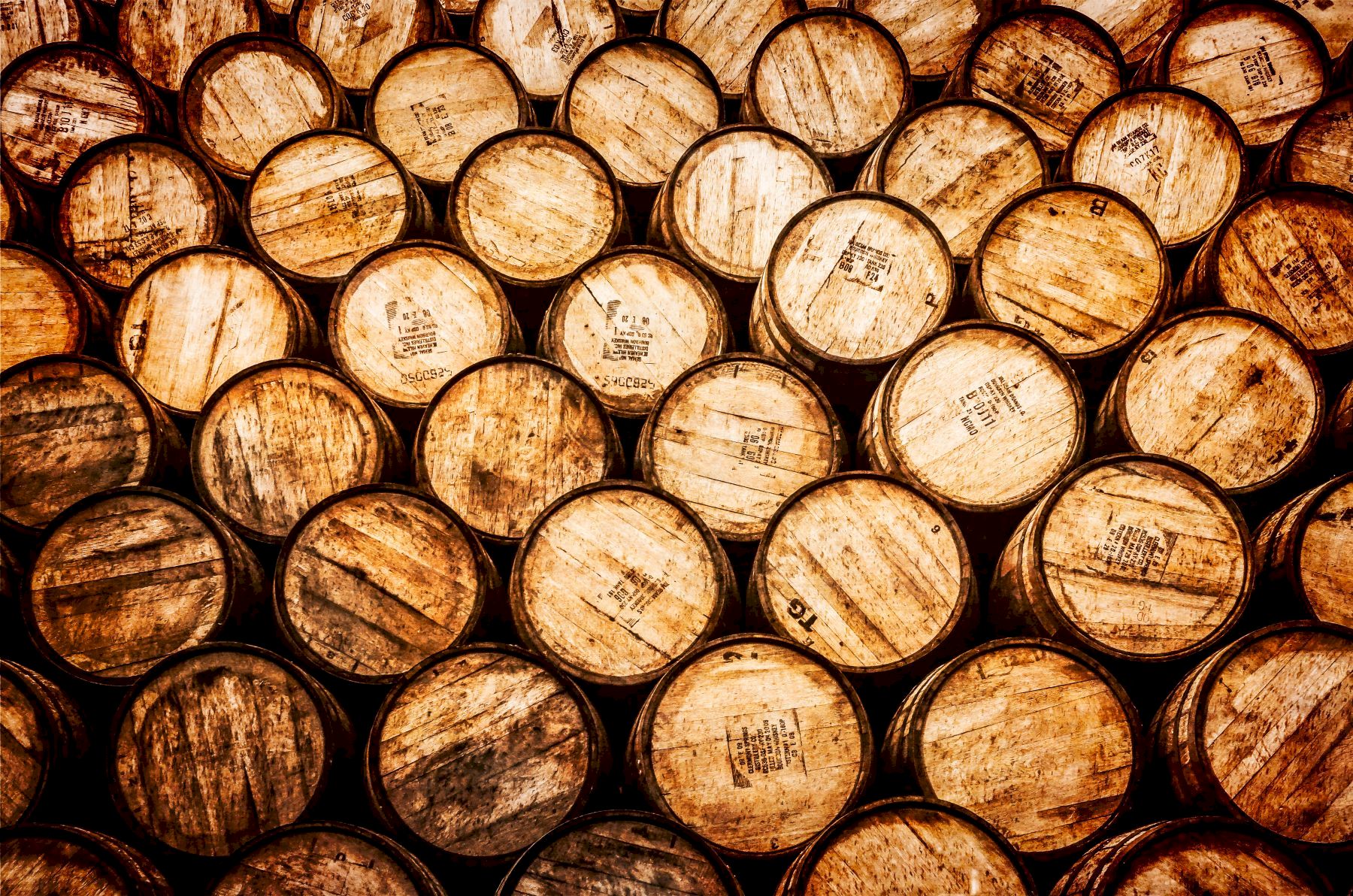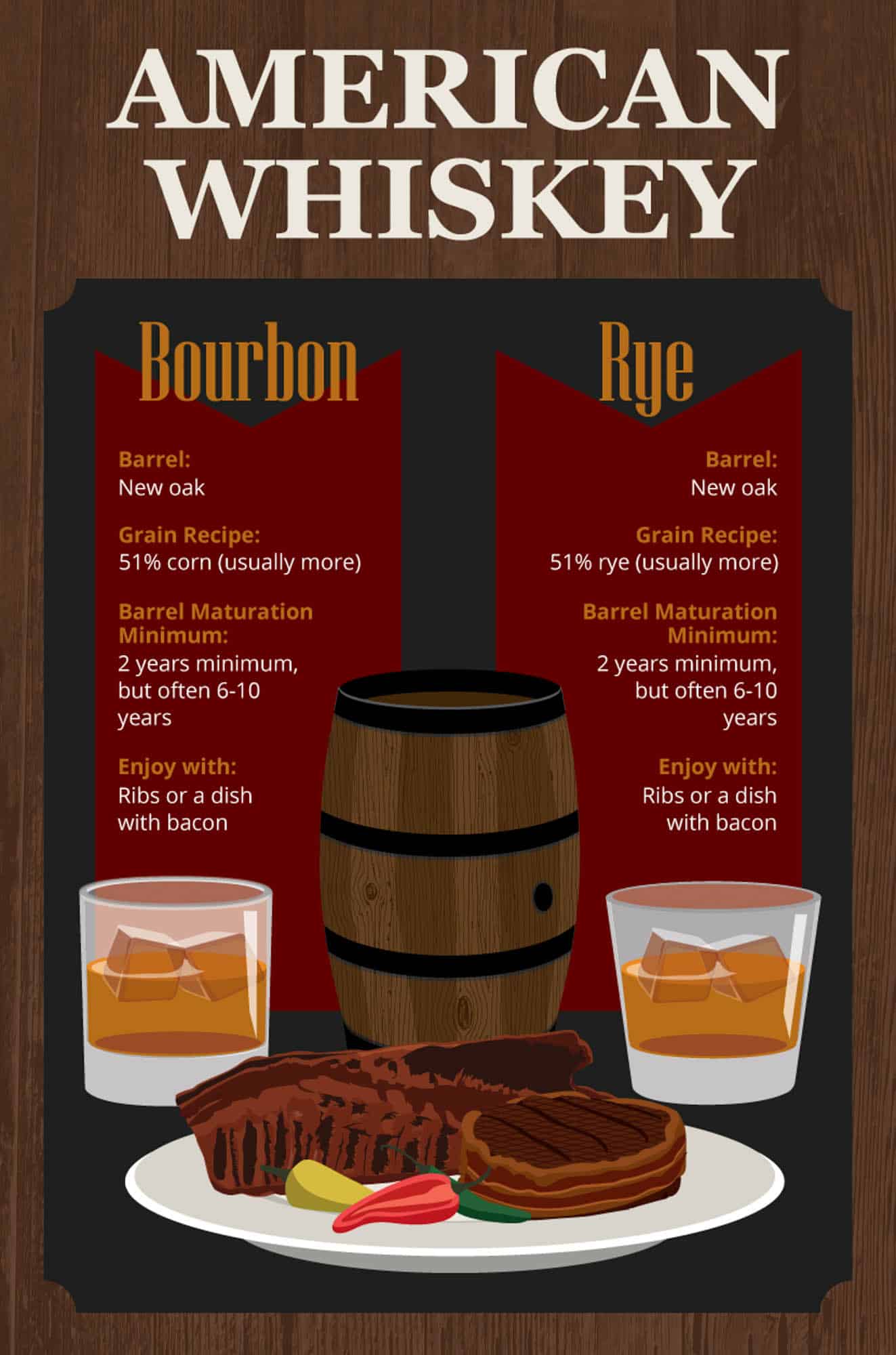
By law, bourbon must be aged in new, charred oak barrels. The aging process is a crucial step in the production of bourbon, as it allows the spirit to develop its complex flavors and characteristics over time. So, whether you prefer a high-rye bourbon with a spicy kick or a wheated bourbon with a mellow sweetness, the choice of grains in the mash bill plays a significant role in delivering a unique bourbon experience. This diversity allows bourbon enthusiasts to explore different expressions and find the one that suits their palate. The specific proportions of grains in the mash bill can vary from one bourbon producer to another, resulting in a wide range of flavor profiles. Barley is often used for its enzymatic properties, aiding in the fermentation process. Wheat, on the other hand, imparts a softer and smoother character. Rye, when included in the mash bill, adds spiciness and complexity to the bourbon. The percentage of corn in the mash bill must be at least 51% to meet the legal requirements. The use of corn as the primary grain contributes to bourbon’s sweetness and gives it a distinct flavor. The combination of grains used in the mash bill significantly influences the taste and character of the bourbon.


Common secondary grains include rye, wheat, and barley. While bourbon must be made primarily from corn, there is flexibility in the choice of secondary grains. The ingredients used in bourbon production are an essential factor in shaping its flavor profile. It allows for the removal of impurities and the concentration of desirable flavors, setting the stage for the aging process to work its magic. The distillation process is a crucial step in shaping the flavor and character of bourbon. This distillate, also known as “white dog,” is the raw bourbon that will be aged and further refined. As it reaches the top, it condenses and is collected, resulting in a higher proof spirit. On the other hand, pot stills, with their traditional and labor-intensive method, yield a more flavorful and robust bourbon.ĭuring distillation, the fermented mash is heated, and the alcohol vapor rises through the still. Column stills, known for their efficiency, produce a lighter and more neutral spirit. The choice of still can impact the flavor and character of the final product. Once fermentation is complete, the liquid is ready for distillation.īourbon is typically distilled using a continuous column still or a pot still. After the mash is prepared by combining grains, water, and yeast, it undergoes fermentation to convert the sugars into alcohol.

The distillation process plays a crucial role in the production of bourbon. So, the next time you pour yourself a glass of bourbon, remember that it’s more than just a whiskey – it’s a spirit with a rich history and a set of legal standards that make it truly special. The aging process in new charred oak barrels imparts caramel and vanilla notes, while also adding depth and complexity to the spirit.īy adhering to these legal requirements, bourbon producers are able to create a unique and consistent product that whiskey enthusiasts around the world appreciate. The high corn content in the mash bill gives bourbon its signature sweetness and rich flavor profile. These legal requirements ensure that bourbon maintains its distinct characteristics and sets it apart from other types of whiskey. It must also be aged in new, charred oak barrels and bottled at a minimum of 80 proof (40% alcohol by volume). According to these regulations, bourbon must be made in the United States, primarily from corn, and distilled to no more than 160 proof (80% alcohol by volume). Federal Standards of Identity for Distilled Spirits. To be classified as bourbon, it must meet certain criteria set by the U.S. What is Bourbon? Definition and Legal Requirementsīourbon, often referred to as America’s native spirit, is a type of whiskey with specific legal requirements.


 0 kommentar(er)
0 kommentar(er)
